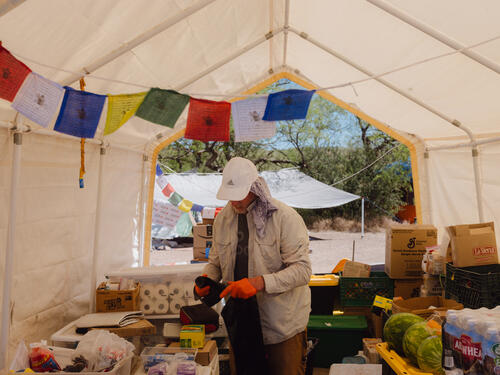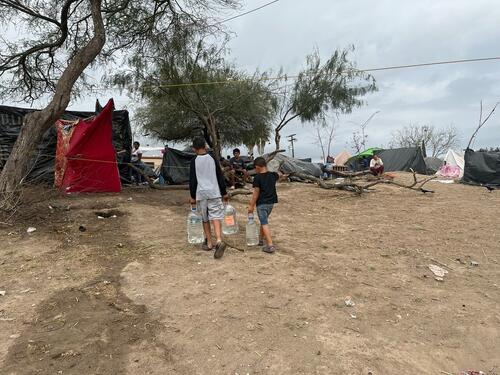Médecins Sans Frontières (MSF) has resumed work supporting non-profit groups based in Arizona, United States of America (US), which are bringing humanitarian aid to migrants and asylum seekers crossing the US-Mexico border near the Sonoran Desert.
Earlier this year, a small MSF team worked alongside Humane Borders, Samaritans, No More Deaths, and other local nonprofit groups to assess the medical needs in the region and suggest ways to build capacity for increased services and collaborations.
“We determined that migrants along this route are extremely vulnerable and are in dire need of additional support,” says Adriana Palomares, MSF head of mission in Mexico and Central America. “We observed pregnant women, children as young as eight months old, and people who need access to medication for diabetes, hypertension, and asthma trying to walk this treacherous route across the desert.”
We determined that migrants along this route are extremely vulnerable and are in dire need of additional support.Adriana Palomares, head of mission in Mexico and Central America.
Every year, thousands of migrants and asylum seekers take this route, crossing the US southern border into Arizona’s Pima and Santa Cruz counties on foot through the Sonoran Desert. This is a dangerous route through a remote region without shelter or basic services, and several hours away from the nearest hospital.
People on the move traverse very rough terrain where the weather can be extreme—freezing nighttime temperatures in winter and blazing hot temperatures and rain in the summer months. The intense conditions put people at high risk of death from various factors, including from dehydration, physical exertion, and exposure.

Most people trying to seek asylum at the US southern border must request an appointment using a mobile app known as CBP One. The app has been riddled with problems and delays, leaving people stranded and waiting for appointments for months in dangerous border cities in Mexico. For some, the risk of staying in Mexico is too high and they decide to walk north across the Arizona desert.
We plan to spend around six weeks helping local groups prepare for a potential increase in migration flows at this border crossing. The MSF team is identifying current needs, helping to boost supplies at sanitation and hydration points, and supporting training on basic wilderness first aid. Additionally, the team is assisting mental health providers with training in psychological first aid in addition to supporting social work, health promotion, and addressing issues related to sexual violence.
MSF will consider additional support based on the needs that may arise from a surge in the number of people crossing the border.
Our teams see trapped, vulnerable people in inhumane conditions at the US-Mexico border who embark on this route through the desert out of sheer desperation.Dr Belen Ramirez, project coordinator
For over a decade, MSF has provided medical care and psychosocial support to people on the move along the migration routes through Central America to the United States. We have long documented the challenges faced by migrants on these routes, including US policies that create barriers to the right to seek asylum.
“Our teams see trapped, vulnerable people in inhumane conditions at the US-Mexico border who embark on this route through the desert out of sheer desperation,” says Dr Belen Ramirez, MSF project coordinator. “The US has a responsibility to adequately resource processing at the US-Mexico border to allow people to seek asylum without risking their lives.”






